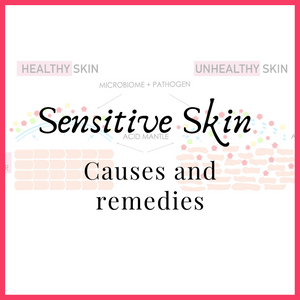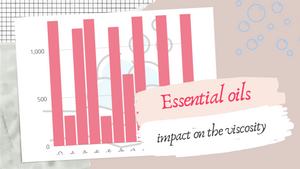
The "oil-free" title can be quite misleading. Actually you need an oil phase to create an emulsion. There is no doubt about that but there is a difference between oil and oil.
This cream doesn't contain any conventional plant oil. The whole oil phase consists of triheptanoin which is a polar, palm-free triglyceride with an amazingly light skin feel. Nobody wants a heavy and rich cream over the face during summer but everybody needs some emolliency and hydration even during the most tropical summer. This cream, although rich in appearance has a light skin feel that makes it even pleasant during the summer.
Using the triheptanoin instead of a plant oil or a blend of several plant oils has the advantage of improving the oxidation stability of the product compared to using oils with a high content of polyunsaturated fatty acids. If you are mainly selling your products for tropical or high temperature climate this is something you may need to consider more deeply to create products with a higher shelf-life.
We have challenged ourselves to create a stable emulsion by only using triheptanoin and have imparted a powdery, dry skin feel (again suitable for summer) by adding the modified rice starch to the emulsion (which both improves the stability and imparts a powdery skin feel).
The formulation is almost KISS and the procedure is rather straightforward. As DaVinci has supposedly said:
Just a reminder of a few technical points for those of you who are new here or those of you who have forgotten why we do what we do:
1- We blend Solagum AX and tara gum to increase teh viscosity, improve the stability and the flow of the product. Read this previous post about gum dispersion
2- We add the gum right after emulsification to the still hot emulsion.
Read these previous blog posts for more details
The impact of gum dispersion on the emulsion
3- We add the D-Panthenol, the gotu kola extract and the sodium lactate after emulsification to the cold emulsion. This is to protect the integrity of these ingredients as well as to improve the emulsion stability
4- We are using a preservative that works independent of the pH. We still aim for a pH between 4,9-5,5. If you use another preservative system you may need to consider the preservative efficacy range
Now let's jump to the formulation and procedure.
Ingredients:
| Phase A | Dosage |
|---|---|
| Distilled or deionized water | to 100,0% |
| Aquaxyl | 2,0% |
| Chelator PA3 | 0,1% |
| Na-citrate | 0,5% |
| Phase B | |
| Natural emulsifier GSC POF | 5,0% |
| Triheptanoin | 20,0% |
| Modified rice starch | 3,0% |
| Tocopherol | 0,3% |
| Phase C | |
| Solagum AX | 0,3% |
| Tara gum | 0,1% |
| Phase D | |
| D-panthenol | 1,0% |
| Na-lactate | 2,5% |
| Gotu kola extract | 2,0% |
| Phase E | |
| no-Kons PA20 | 1,0% |
| Sweet orange oil | 1,0% |
| Lactic acid | to adjust the pH |

Procedure:
1- Blend phase A and B in separate heat-proof beakers
2- Heat phase A and B in a water bath between 82-86 C
3- Emulsify the oil phase in the water phase
4- Disperse the gum in the still hot emulsion
5- Start cooling down while stirring
6- When the temperature reaches under 50 C add phase D
7- When the emulsion reaches <35 C add the preservative system and the essential oil. The preservative system works independent of the pH
8- When the emulsion reaches the room temperature prepare a 10% dilution and measure the pH. In our case it was 6,69.(You can do this step even before adding the preservative and the essential oil)
9- Reduce the pH by adding lactic acid. If you are making this formulation for the first time add the lactic acid gradually and measure the pH in between.
10- Prepare another dilution of the emulsion and measure the pH. In our case it was 5,38. We are aiming for a pH between 4,9-5,5.
11- Take the stability and micro kit samples and fill the rest in a suitable container
You can watch the video here


